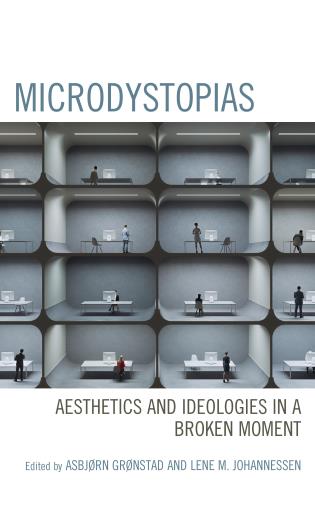- Contributor
- Editors
- Publisher
- Year
- ISBN
- Language
- Nahum Welang
- Asbjørn Grønstad and Lene Johannessen
- Rowman & Littlefield / Lexington
- 2022
- 9781666929423
- English
This edited collection examines the effects that macrosystems have on the figuration of our everyday—of microdystopias—and argues that microdystopic narratives are part of a genre that has emerged in contrast to classic dystopic manifestations of world-shattering events. From different methodological and theoretical positions in fieldworks ranging from literary works and young adult series to concrete places and games, the contributors in Microdystopias: Aesthetics and Ideologies in a Broken Moment sound the depths of an existential sense of shrinking horizons – spatially, temporally, emotionally, and politically. The everyday encroachment on our sense of spatial orientation that gradually and discreetly diminishes the horizons of possibilities is demonstrated by examining what the forms of the microdystopic look like when they are aesthetically configured. Contributors analyze the aesthetics that play a particularly central and complex role in mediating, as well as disrupting, the parameters of dystopian emergences and emergencies, reflecting an increasingly uneasy relationship between the fictional, the cautionary, and the real. Scholars of media studies, sociology, and philosophy will find this book of particular interest.
In his chapter on Beyoncé’s Black Is King, Nahum Welang delves…into Beyoncé’s redramatization of The Lion King in order to address the complicated issue of cultural appropriation within the context of microdystopia (152). Showing how the collaborative visual album Black Is King is a celebration of diversity, as well as “as aspirational political statement about pan-African solidarity,” the chapter adeptly brings to the fore the imbrication of microdystopia and microutopia (159). Valuably, Welang’s analysis reminds us that the microdystopic names not only conditions of precarity perpetuated by economic, technological, and political energies—conditions that are then represented through a diversity of aesthetic languages—but that it may also pertain to the level of cultural representation itself.
- Reviews
University of California, Berkeley

